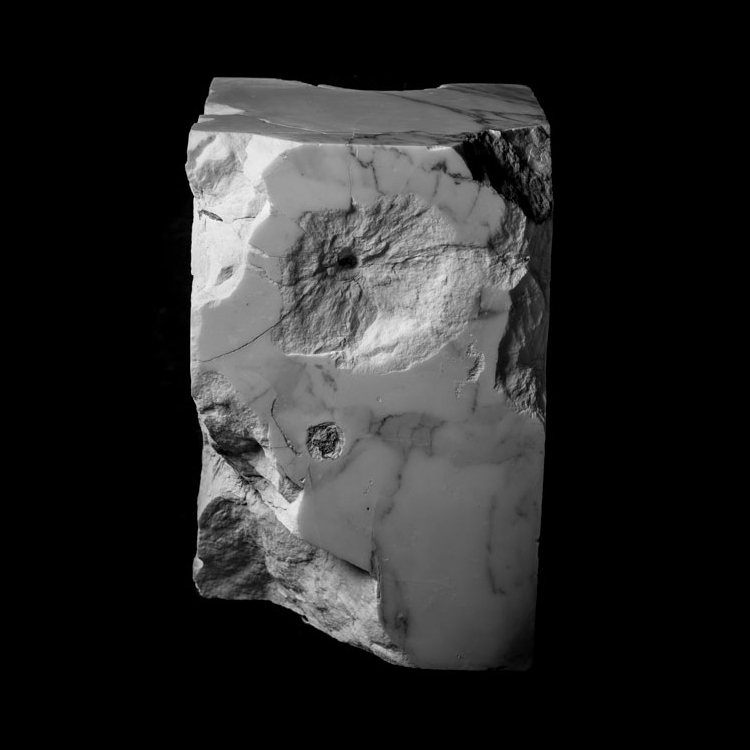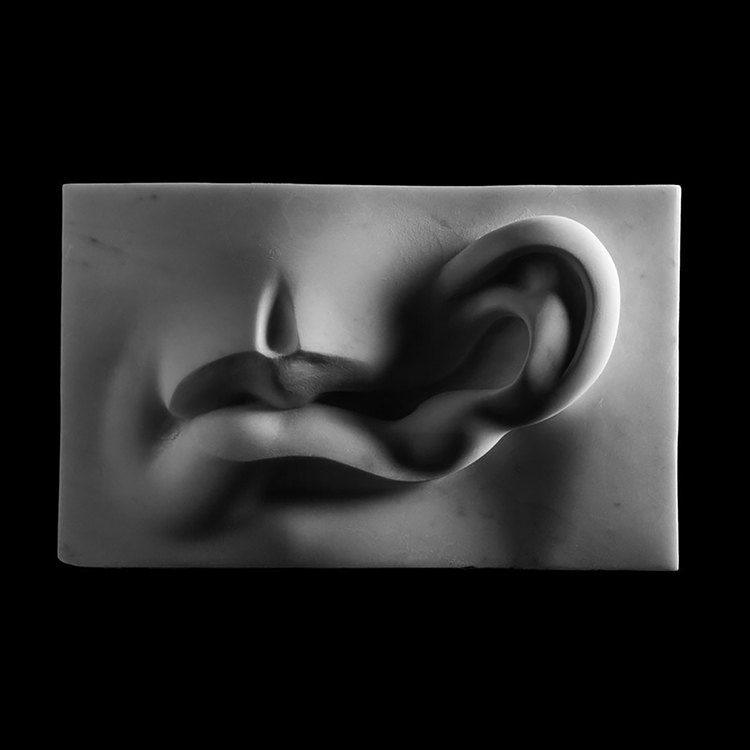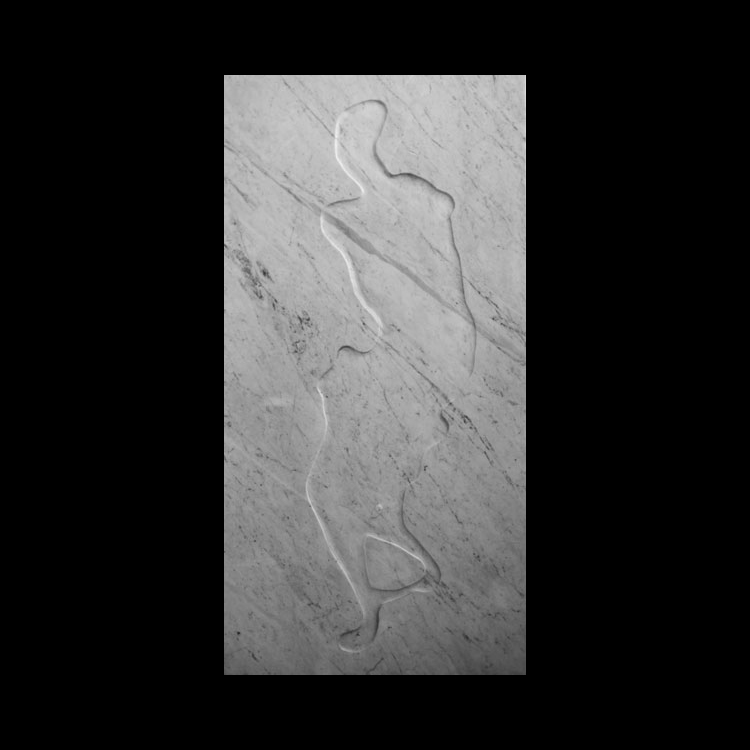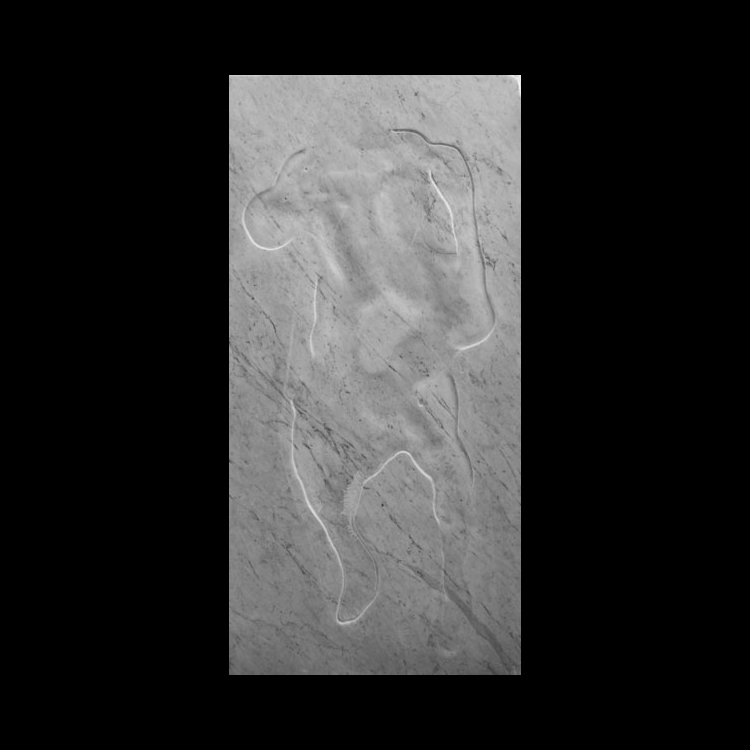Athar Jaber is Carving Out His Own Space
Written by Hussam Eddin Mohammed
Canvas Magazine
June 2016
Hussam Eddin Mohammed looks into the scarred surfaces of Athar Jaber’s sculptural expressions of violence and destruction in today’s world.
Antwerp-based sculptor Athar Jaber’s Iraqi origins are reflected in his name, the Arabic word for ‘March’, the first month of spring. The name evokes lyrical associations with the optimistic season of rebirth in contrast with the more sinister undertones that the decaying and mutilated sculptures that he skillfully carves out of Carrara marble reveal. Athar’s works bring to mind the ambivalence of Mahmoud Darwish’s description of March as “the cruelest of all months” in The Land and TS Eliot’s attributions of cruelty to another spring month, April, in The Waste Land. In a comparable manner, he creates an entirely contemporary form of sculpture that brings together the craftsmanship of the classical tradition with new experimental techniques for working with his materials and a process that acknowledges Conceptual art. Through this skilled manipulation, Athar places the idealised human form of sculpture’s classical tradition in dialogue with the violent reality of the contemporary human condition.

Born in Rome and raised in Florence in an Iraqi family with a long painterly tradition, Athar draws from both civilisations in a way that picks up on the migrant artist theme visible in his parents Jaber Alwan and Afifa Aleiby’s respective practices. Alwan’s colourful depictions of the arts and portrayals of the female figure belie a struggle with the loneliness and alienation of life in exile from one’s homeland. Similarly, under the balanced surface of Aleiby’s work, an ongoing dialogue can be discerned between the ancient Iraqi concept of beauty and that of the European Renaissance. Picking up on these inherited strands, Athar goes on to develop a prolific practice (especially so given his medium), a unique process and a visual language all of his own that permits him to express the experience and world view produced by his specific context.

Athar was six when the Iraq-Iran war ended, nine during the Desert Storm War and 21 during the Iraq invasion in 2003. While images of the destruction in his ancestral land streamed into his life through television screens, newspapers and films during his youth, he found inspiration and solace at the Galleria dell’Accademia gazing upon Michelangelo’s classical sculptural masterpieces. He then moved to Belgium in the 1990s to study sculpture at the Royal Academy of Fine Arts in Antwerp, where he still teaches today. Of note, his work has been presented primarily to international audiences; his exhibitions over the last three years include a recent solo show at Galerie Löhrl in Mönchengladbach, Germany (21 May–2 July 2016) as well as at the Mall Galleries in London, Palazzo Medici-Riccardi in Florence, Museum of Medical History in Berlin, and Andreas Syggros Museum in Athens.
Historical and geographical rifts are continuously revisited in Athar’s art through the contrast between the real situation in Iraq and the ideal of Renaissance figures. Beneath the brave confrontation of the violence and horror of that reality, his work brings into focus the fragility of the human form, both in its fleshly and marble forms. The beautiful horror of his expressive forms, rendered through an impressive mastery, speak of the human pain of watching the tragic destruction of lives and heritage in Iraq. The contortions, erasures and mutilations that interrupt the recognisably classical lines of his sculptural figures reveal his dual concern for beauty and decay or destruction. The two have long been associated with ancient sculpture but here we hear an echo in the painful contemporary human story of violence, isolation and loss while still celebrating the human form

Athar seems to challenge the hardness of the marble with technical innovation. Out of the coldness of the material and its harsh brilliance, he constructs works that simultaneously capture the spirit of the Italian Renaissance and the agony of the modern day condition. Muscles twist, bones and veins become visible and limbs cling together as if in defense while an index finger points to something unknown as it strongly presses the flesh of the body. Athar sculpts figures that have been broken or decayed or folded in on themselves from an outside force, be it violence or his experimental techniques of using acid erosion, sand blasting and gun shots.
With this uniquely experimental practice, Athar lays bare the inherent violence of the sculptor’s craft, where hammer and chisel apply force to marble to transform a slab into a form and metamorphose that human shape into something that looks like old, broken statues, the face of the child, the robust young man’s body and the figure of the woman are all transformed into disgraceful and wounded forms, objects of untold ravages.
Through Athar’s mournful yet luminescent sculptures, the viewer is asked to reconcile traditional aesthetic standards by completely dismantling what is generally accepted and looking with fresh eyes at the reality of our world to find an awful beauty there.

Share article





























